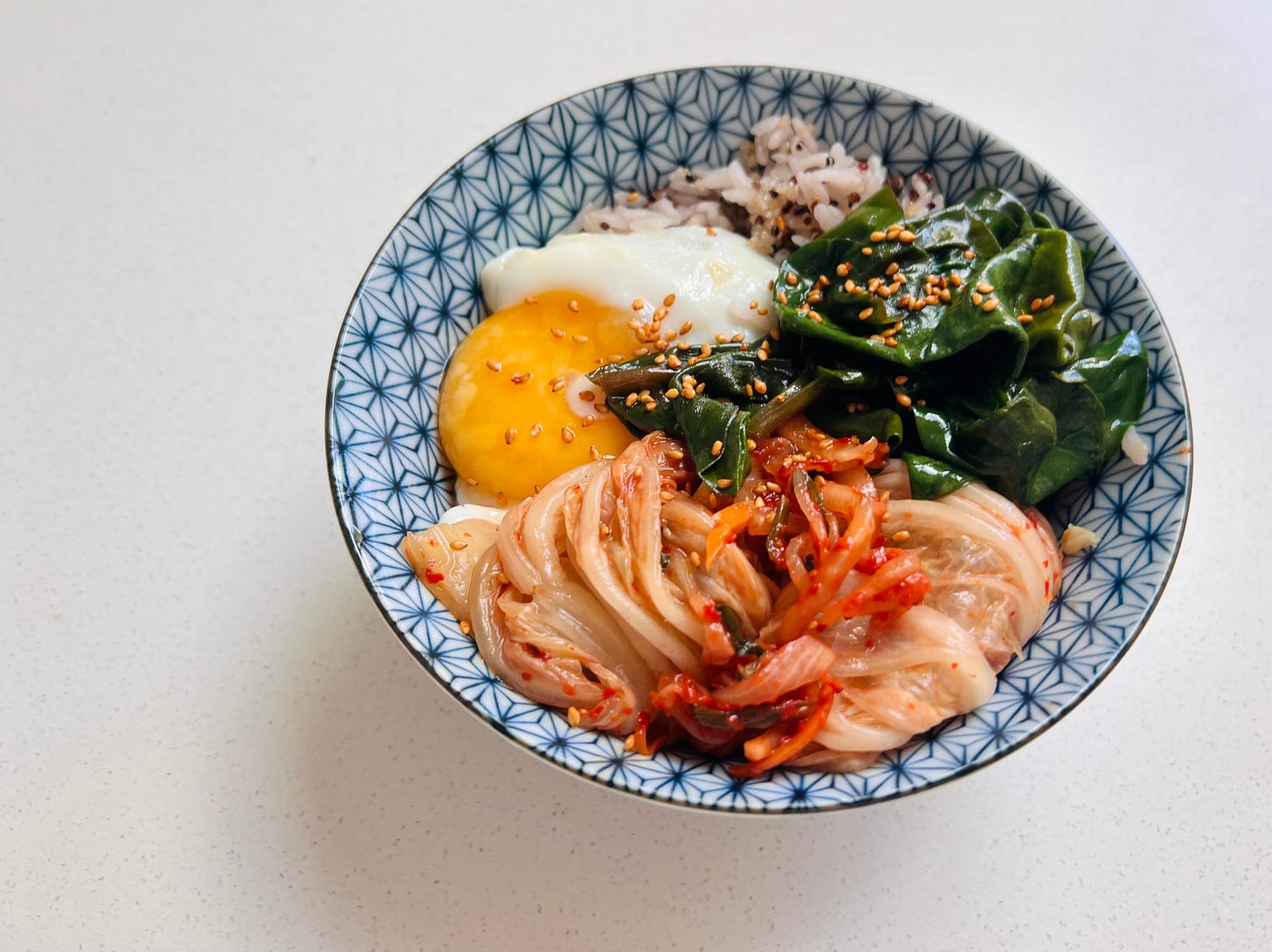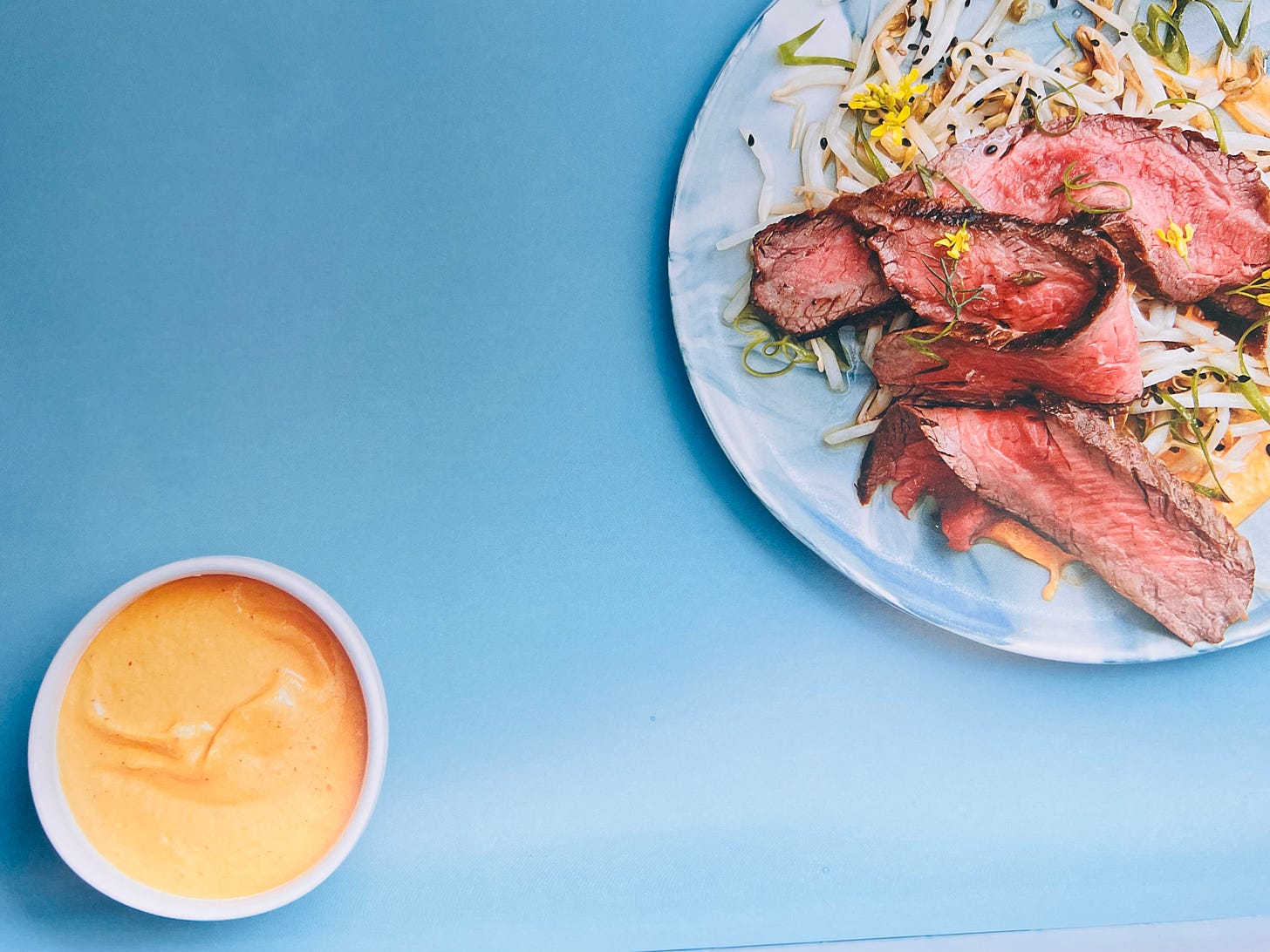Kimjang! A Community Fermentation Jam
Plus! A miso-kimchi dip that tastes more like Doritos than fermented veggies.
Last weekend I attended my very first kimjang, a community kimchi making party, hosted by actress and writer Greta Lee. In the old world tradition, Greta hosts her tight knit circle of intimidatingly accomplished Korean Angelenos for an all-day undertaking of fermenting cabbage (this was the first year they “opened it up” to non-Koreans, so I was honored). Kimjangs are a dwindling custom in Korea, but historically, communities would convene each Fall to produce enough kimchi to sustain their respective households through the long, harsh winter. Matriarchs would monitor the weather forecasts to determine a favorable date, mindful of the climate’s effect on the process, since kimchi vessels were buried underground to ferment for months (we didn’t do this, but I love a solution that frees up fridge space).
Arriving a few hours into the kimjang, I could distinguish the veterans in the group by their Pleats Please inspired aprons that Carol Lim, creator of Opening ceremony, had brought back from Seoul. The buffet table was densely packed with Korean fried Chicken and kimbap, fuel for a 12-hour long endeavor, whose rigor would eventually devolve with the introduction of alcohol. Clusters of friends, elbow-high in rubber dishwashing gloves, were engaged in manual labor and passionate debate over the order of operations. (Children were kept busy with a bounce-house water slide). Like all great culinary traditions, no two households make kimchi the same way, and fighting for your recipe is part of the fun.
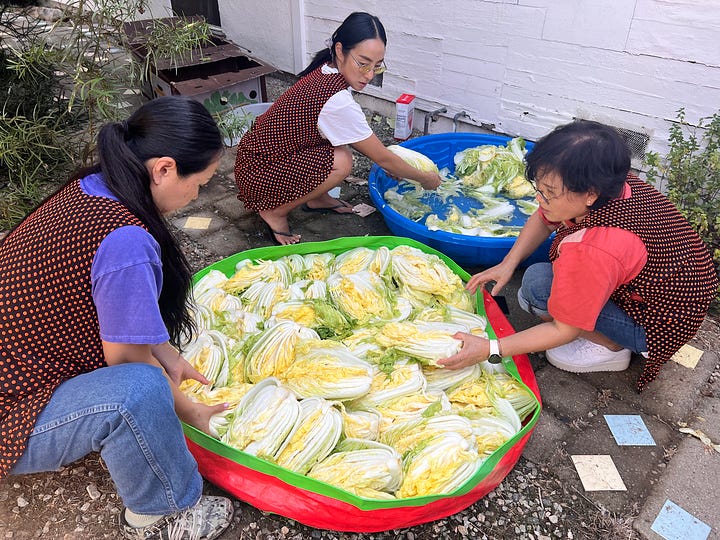
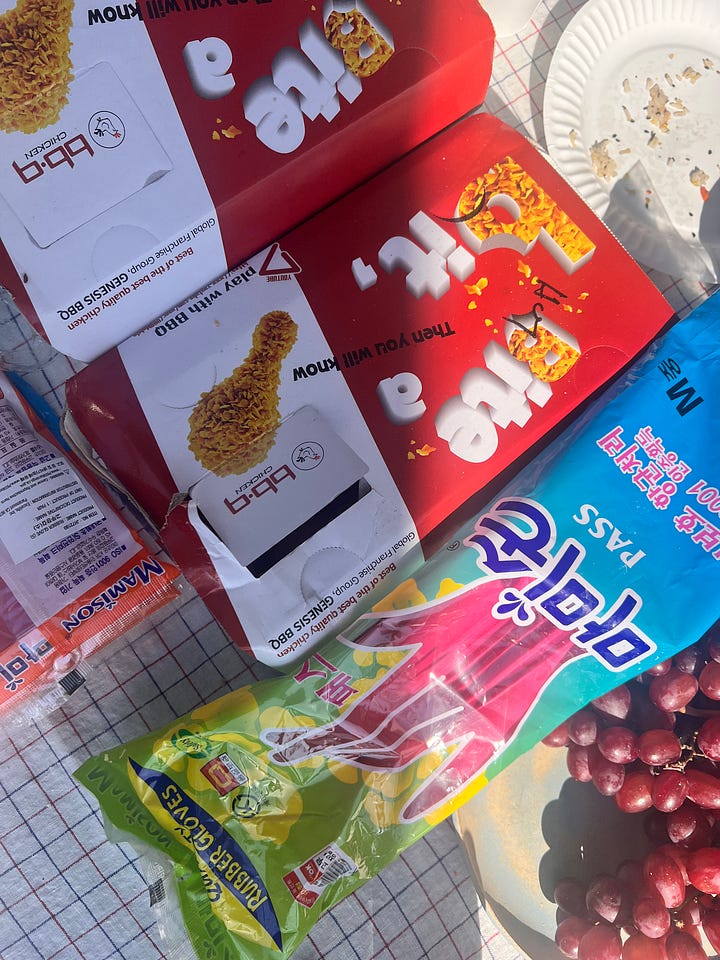
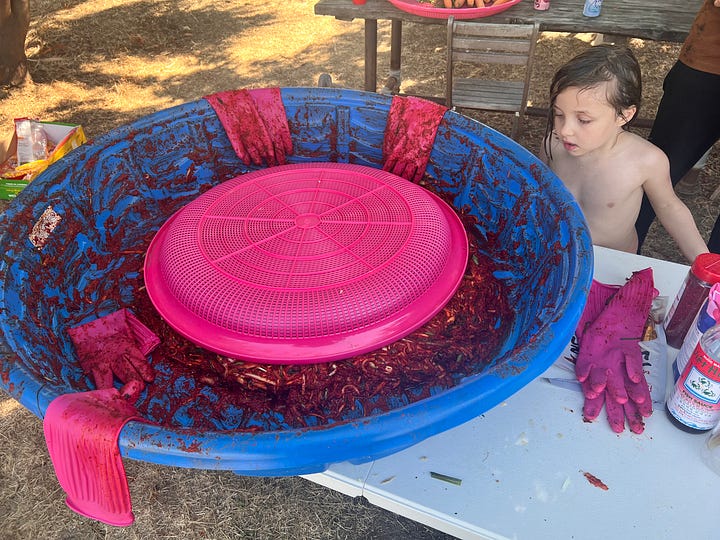
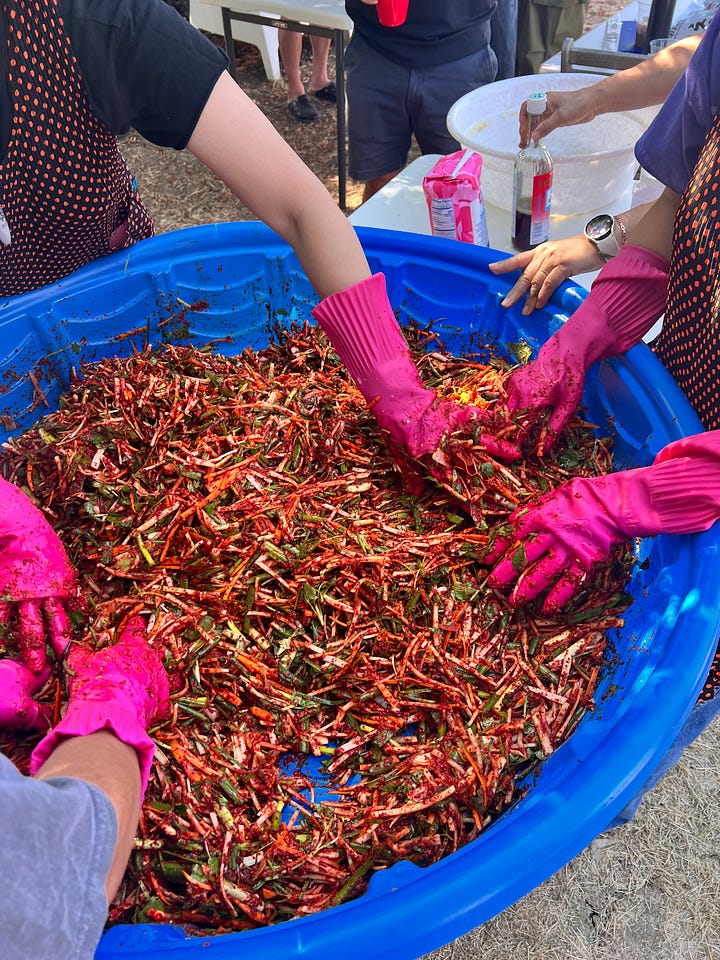
It was an unseasonably hot day, which meant the experts in the group had to adjust the timing (remember, the tradition is to do this in Fall in Korea, where the average temp is around 60°F, as compared to the nearly 100 degree Southern California day we were experiencing). Making anything on this scale can get complicated, especially with something as time and temperature sensitive as fermentation (warmer temps = faster fermentation). I relegated myself to “engaged observer,” taking notes for next year on everything from the “kimchi squat” required to move cabbage in and out of the salt brine kiddie pool, and the nuanced balance of gochugaru, sugar, and shrimp paste used to season the veg.
I didn’t make it to the end of the durational event, so I left my ceramic vessel to be filled in my absence. After Greta so graciously delivered the final result to my door, I have been working kimchi into my cooking ever since. Some of my favorite dishes this week were chopped kimchi tossed into scrambled eggs at the last minute, and I blended some into a dosa batter, which gave the batter flavor, but also kickstarted fermentation. Lastly, for the most satisfying lazy lunch, I made a pot of what I call “Crazy Rice,’ a blend of Koda Farms sweet rice with SIMPLi tricolor quinoa, amaranth, and lentils, and ate that with a fried egg, some sautéed greens, and kimchi. I’ll send that recipe out later this week.
Best of all, I revisited my Miso Kimchi Dip/Sauce that has been described as having the aura of “healthy Doritos.” If you are looking to substitute chips for crudité, the impossible just became attainable.
Interested in making your own kimchi at home? I recommend Lauryn Chun’s book, The Kimchi Cookbook. It’s a great introduction, if you aren’t yet ready to operate on the kiddie pool of cabbage scale.
Miso Kimchi Dressing or Dip
Use this as a dip for veggies, or as a salad dressing for a simple mix of soybean sprouts, sesame seeds, and some green onion.
Keep reading with a 7-day free trial
Subscribe to Salad for President Substack to keep reading this post and get 7 days of free access to the full post archives.




